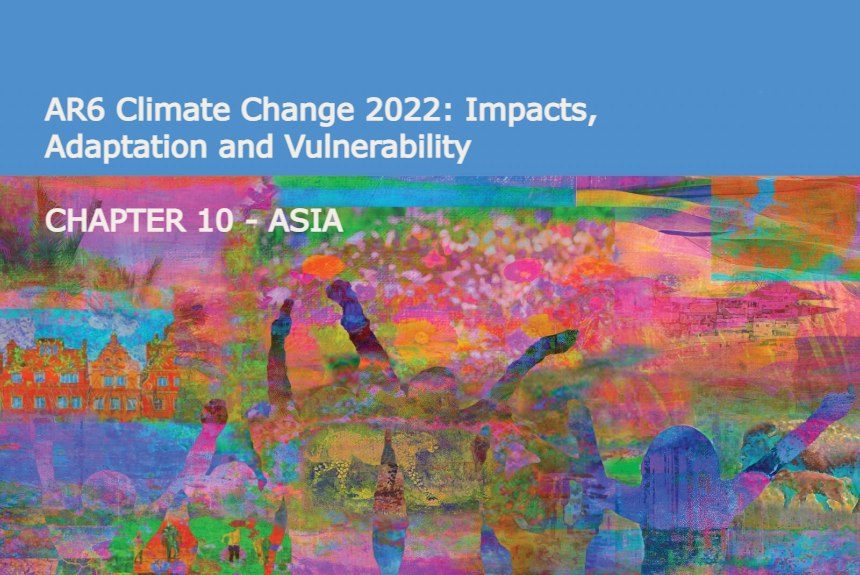Asia is the largest continent and home to 60% of the earth’s population. It is composed of 51 countries which are grouped into six regions.
The IPCC AR6 Working Group II report has a chapter on Asia, which presents a thorough discussion of the region’s climate trends, risks, and impacts of climate adaptation.
Below are excerpts from AR6 WGII Chapter 10.
- Asia’s terrestrial ecosystem is seeing some shifts driven by global warming. In North Asia, tree growths are moving upwards or in multiple directions. Due to warming, the length of the growing season has increased in some parts of East and North Asia, and the spread of invasive species is also growing.
- Increased warming of the ocean leads to the bleaching of coral reefs. The damage could be irreversible when the temperature rise reaches 2°C, the reports say. Corral bleaching can destroy the marine and coastal ecosystem and impact the livelihood of 4.5 million fishers in Southeast Asia and the Indian Ocean.
- Rapid urban growth in countries like India will increase water scarcity, and climate change effects like the lack of rain or prolonged dry days could exacerbate the already dire situation.
- Asia houses 400 people living in poverty or below the threshold of $1.9 a day. Aside from monetary indicators, the lack of access to basic infrastructure and services also contributes to poverty in Asian countries, mainly South Asian nations.
- Glaciers in Asia are a significant source of freshwater for 220 million people; continuous melting of these glaciers – the report projects that by the end of the century, between 50% to 70% of glaciers n the high mountains of Asia will disappear. More glacier collapses, and glacier lake outburst floods will threaten downstream communities.
- Climate change will threaten food production in Asia. India could see a decline in rice production of up to 30% and maize of up to 70% when temperature increases from 1 to 4C. In Cambodia, rice production will decrease by 45% under a high emissions scenario by 2080. Other rice-producing countries like Indonesia, Bangladesh, Thailand, Vietnam, the Philippines, Japan, and Myanmar will also be affected.
- Asian cities have the largest informal settlements, making the cities more vulnerable to climate change impacts. The report says that by 2050, 64% of Asia’s population will be in urban areas. While its cities are considered high-risk locations, they also have great potential for climate adaptation.
- While climate adaptation in Asia is growing, these are in their initial stages and reactive in nature. Higher temperatures will increase critical infrastructures – power lines, roads, railways, airports, and harbour to extreme events. When it comes to climate adaptation budgets, larger cities tend to get a higher share and priority than smaller cities and towns.
- Other climate change impacts in Asia include increasing vector and water-borne diseases, heat-related deaths, migration, and disaster displacements, especially in Bangladesh, China, India and the Philippines.
- Asian countries can counteract these impacts by pursuing climate-resilient development pathways, including increasing the understanding of climate impacts, improving planning strategies, budget allocation, risk awareness of extreme events, and empowering people to make climate-friendly choices.
Click the link to read more about Asia’s climate trends, vulnerabilities, and climate adaptation strategies. Chapter 10: Asia
BACKGROUND IMAGE CREDIT: “A Borrowed Planet” by Alisa Singer. Source: IPCC



Leave a Reply